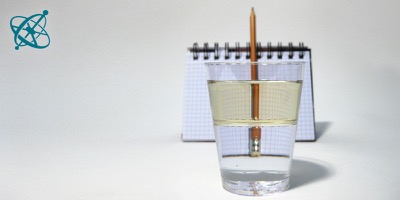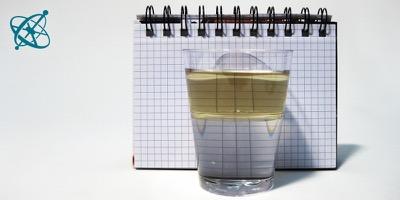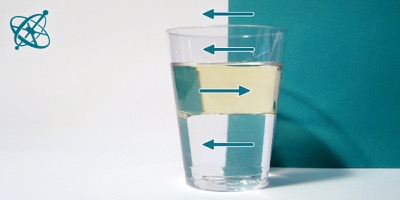 www.sciensation.org | Ciênsação hands-on experiments are published as Open Educational resources under a Creative Commons Attribution-ShareAlike 4.0 International License.
www.sciensation.org | Ciênsação hands-on experiments are published as Open Educational resources under a Creative Commons Attribution-ShareAlike 4.0 International License.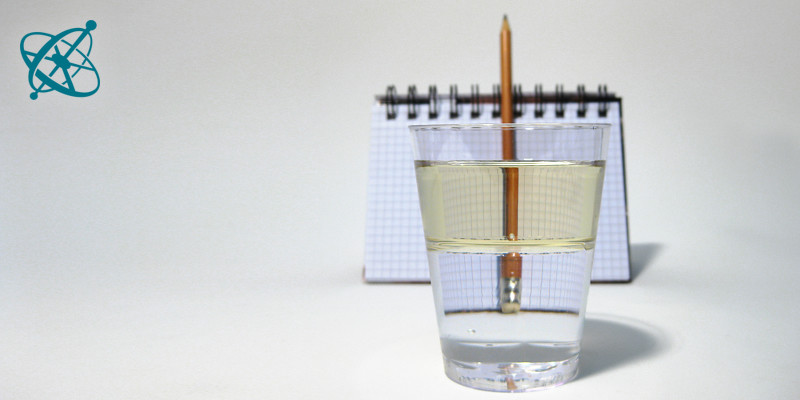
Can you see the 3 lenses?
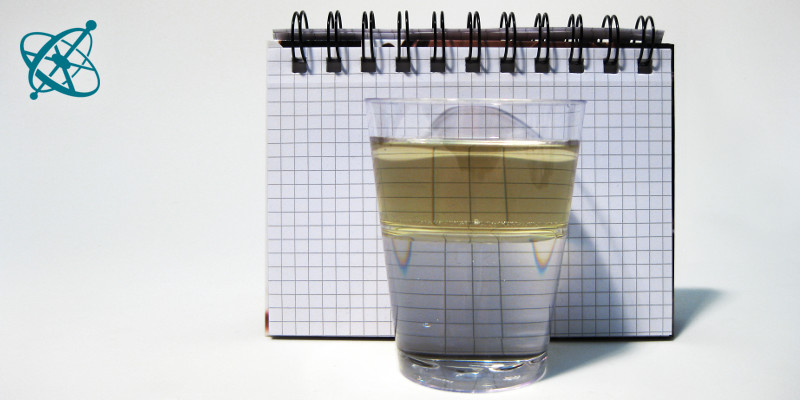
Which one is the strongest?
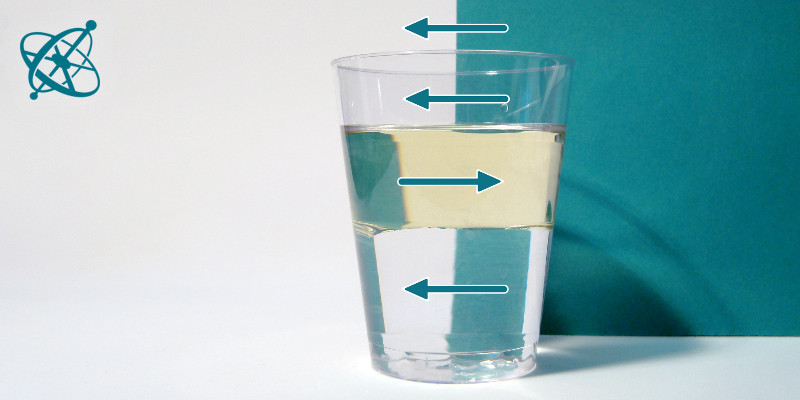
Here the paper is between the focal length of the oil and water lens.
Three lenses in a glass
The refractive indices of water and olive oil are 1.33 and 1.47, respectively. This may seem a small difference – until you see the effect it has with your own eyes.
On that occasion, make your students apply what they know about lenses and learn a useful trick to find the focal length.
The focal length of a lens not only depends on its shape, but also the refractive index of the material it is made of.
Finding the focal length of a converging lens.
Water
Oil
Lined or squared paper
Please think of a suitable way to dispose of the oil after the experiment.
Fill the glass half way with water before carefully adding some oil, pouring it slowly along one of the walls. Then look horizontally through the glass onto a lined or squared paper.
1. Where are the three lenses, and which is the strongest one?
What do you note when holding the paper close to the glass and then moving it away from the glass?
› The lines are distorted – magnified when the paper is close, and demagnified when further away.
Where do you see these distortions?
› In the water, the oil, and on the top part of the glass, which is filled with air.
What determines the 'strength' of a lens?
› How much it deflects light rays, usually measured as focal length.
How can you find the focal length of these lenses?
› Since focusing sunlight is difficult in this case, it is better to rely on another property of converging lenses: They only flip the image of objects at a distance larger than the focal length. Moving e.g. your hand from left to right behind the glass will appear as left-right movement before the focal point and as right-left movement beyond it. At the focal point, the hand seems to come from both sides simultaneously.
It is relatively easy to recognize that the oil and water in the glass act as cylindrical lenses. A careful examination reveals that the glass above the oil also distorts the lines: since the outer and inner glass wall have slightly different radii, the glass itself is a weak meniscus lens. The strength of these lenses can be judged by the distortions they cause. Looking for the focal length is certainly a more accurate way, but here it mainly serves as a pretext to learn a 'trick' for finding the focal length.
Although oil has a lower density than water, it has a higher refractive index than water and therefore forms the strongest of the three lenses. The lens formed by just the glass walls, on the other hand, is so weak that its focal length is hard to determine.
